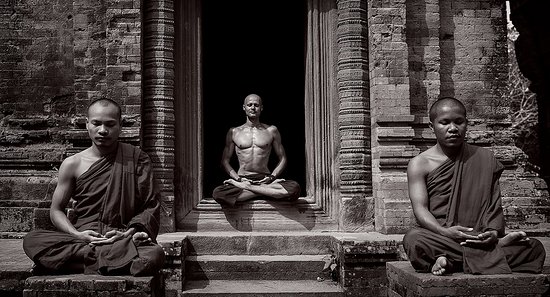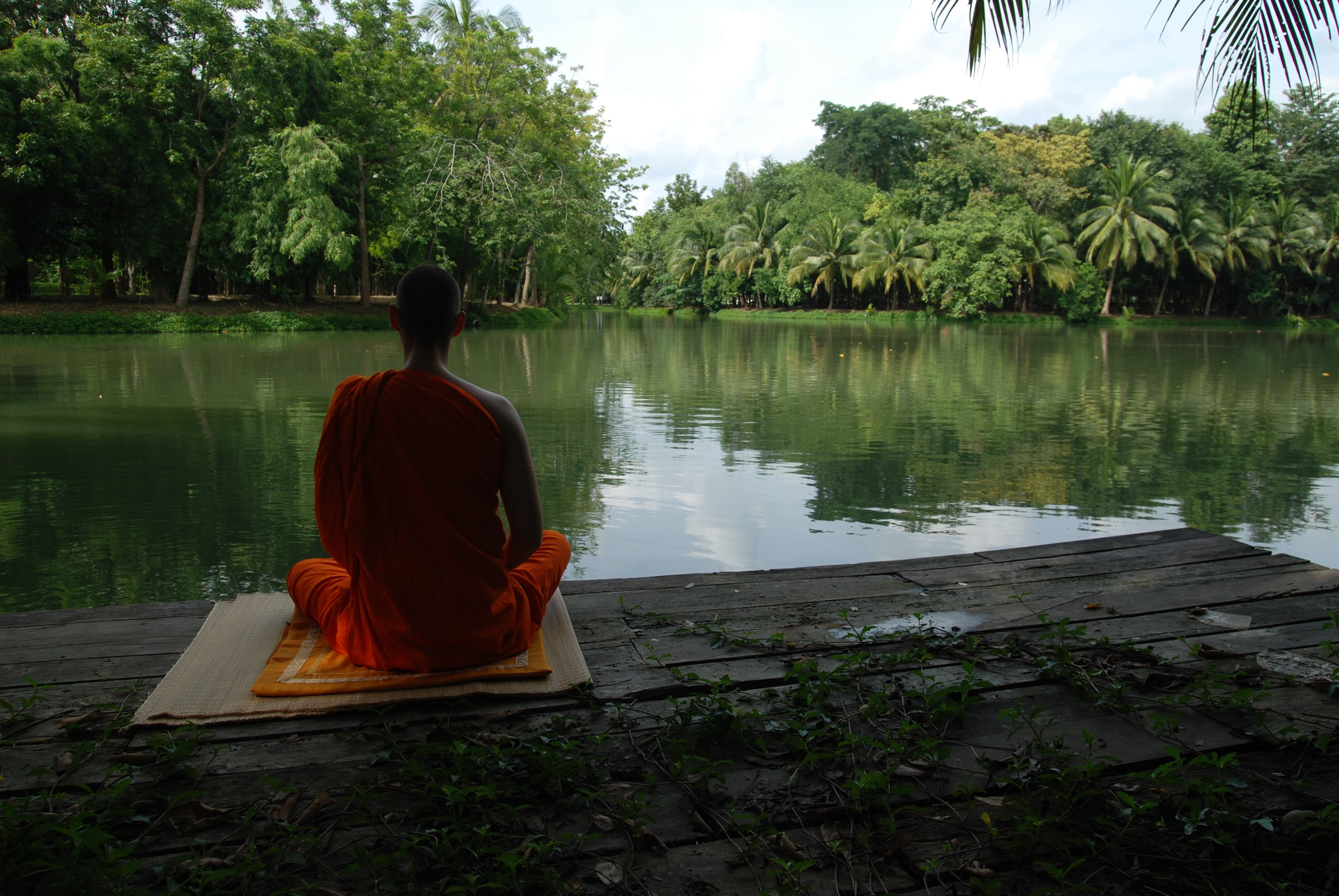If you have a smartphone or a computer, odds are you’ve gotten an ad for a popular meditation app or seen an article on the life-changing effects of meditation. While these promotions of meditation may feel overly trendy on a surface level, they aren’t wrong.
Meditation is a uniquely human practice that can connect you back to your inner self, help you achieve peace, and actually rewire your brain to operate from a more tranquil state.
Meditation is an ever-evolving technique that has spanned for millenniums. It’s time for you to reap the benefits of this practice.
History of Meditation
The use of meditation in daily life has grown in the United States in the past couple of years. From different classes held for different styles of meditation to entire meditation retreats, this ancient art is finally being recognized in the Western world.
While meditation may seem trendy and new, it really dates back millennia upon millennia. Some historians believe that meditation is an innately human quality that has been practiced since the dawn of time, with even Neanderthals participating.
Meditation in Egypt
Paintings and wall engravings seen on tombs and temples around ancient Egypt depict an ancient practice known as Kemetic yoga.
This practice utilizes various sacred geometry postures and positions, combined with a deep meditative state of mind. With Kemetic yoga, the ancient Egyptians channeled powerful energies of the gods and goddesses worshipped by their religion.
Different deities have distinct postures, and while in meditation, the practitioners visualize the energetic aspect of these deities and tap into their powers, whether they are gods of fertility, health, knowledge or anything else.
Apparently, meditative and yoga practices in the Nile Valley predate those from ancient India. With Kemetic yoga, the ancient Egyptians channeled powerful energies of the gods and goddesses worshipped by their religion.
Meditation in India
Archaeologists discovered the first trace of meditation in use in the Indus Valley. Wall art depicting people sitting in meditation positions was found in the valley, dating back to 5,000 BCE.
Sticking with physical evidence of meditation, the oldest written account of meditation on record was found from 1500 BCE in India. In these written records, a practice called “Dhyāna” is discussed.
The techniques were described in the text as the “training of the mind.” These were also the first records to intertwine meditation with religion. The texts came from the Hindu tradition of Vedantism, marking meditation as a pillar of religion and spiritual practice.
Meditation is often thought of as a practice originating from India and no other parts of the world. However, many other countries used meditation to facilitate their own spiritual practice before knowing India existed.
Meditation in China
One of those countries that historians have found used the powers of meditation was Ancient China.
Written references can be found discussing the act of meditation as far back as the 3rd and 6th centuries BC. These references to meditation were made in ancient Chinese philosophical texts from Lao Tzu, also known as Laozi, who is the founder of Taoism. Thus, some of the terms we use today for meditation spawn from Lao Tzu’s text.
In addition, other ancient Chinese texts have been found that point toward the use of meditation for spiritual enlightenment.
All signs point to meditation originating from the Hindu religion. But, unfortunately, we can’t record verbal accounts on meditation, so the debate remains on where meditation truly started.
We can see, however, how many different ancient societies used meditation.
Meditation in Japan
For example, beyond India and China, Japan used meditation as a Buddhist practice. The practice of meditation was brought to Japan by the Japanese monk, Dosho. Dosho was an influential figure in introducing Buddhism in ancient Japan.
After traveling to China to study Buddhist practices, Dosho returned with the knowledge of meditation. From here, he opened a meditation hall that focused on channeling Zen in the body.
There are many people in Japan who practice sesshin, literally “touching the heart-mind”, which is a period of deep meditation in a Zen monastery. There are also group meditations that takes place in various centers or temples.
Meditation in The Abrahamic Religions
- Islam
Islam also uses meditation. We see meditation in the Muslim practice of Sufism. The first records date back 1400 years and involve Muslims connecting to Allah through meditative breathing and repetitive use of mantras.
The word used for Islamic meditation is “dhikr“, which means “remembrance”. The purpose of
meditating and ‘worship’ (‘ibāda) for Muslims is to commemorate Allah, the Sustainer, Creator, and
Caretaker of all existence.
In Sufism, meditation practices are used to purify oneself from sin, excelling the boundaries of
the ego and entering into the experiential wisdom of Allah.
- Judaism
Judaism uses meditation practices that are laid out in the Torah. These forms of meditation revolve around concentrated deep thought and prayer. Though slightly different from today’s mindfulness meditation approach, the Judaic practice was an early attempt at modern meditation.
Early schools of Jewish mysticism are also using meditative processes, based around the biblical account of Ezekiel and the story of the creation in Genesis. Jewish mystics have observed meditation as leading to devekut (cleaving to God).
- Christianity
This method of prayer can also be seen in Christianity.
The earliest account of meditation practice in Christianity was seen in the 10th century in Greece. A technique known as Hesychasm was used to engage people in deep prayer in the Eastern Orthodox Church. Repetition of the Jesus prayer is performed.
Many saints and historical figures from both the Eastern and Western church have followed and performed specific ways to Christian meditation. Christian schoolings have highlighted the use of meditation as an ingredient in expanding one’s knowledge of Christ.
Every religion has adopted meditation in one form or another. This is not random but instead because of the power that meditation holds.
How Meditation Came to the Western World
During the ancient years, meditation was reserved for the Eastern part of the world. However, with time and globalization, the practice spread to the West. The first account of meditation in the Western world was in the 1700s.
Explorers had translated a few ancient texts to European languages and brought the meditation techniques over to their side of the world.
However, these texts were reserved for philosophers and other intellectuals rather than the average citizen.
This shifted in the 20th century when a yogi, Swami Vivekananda, gave a speech on the benefits of meditation in Chicago, USA. This helped meditation gather interest in the West and caused many Indian gurus to immigrate to the United States to continue the teaching.
These teachings were not reserved to any religion alone, and the pre-conceived religious backing that came from texts were removed as they migrated to the West.
Meditation was seen as a way to enlighten the spirit and help with stress relief and positively affect the brain.
The first studies of meditation’s effect on the mental state of humans took place in 1967 when a scientist named Benson researched how meditation impacted the mental and physiological conditions of a person. This was much less about connecting to a higher guide and more about fixing the mental blocks currently inhibiting your life.
Specific studies that focused on how meditation could relieve stress were also held in the late 1970s. For example, Jon Kabat-Zinn researched how meditation could benefit the body and provide stress relief and better health for humans.
This led him to open a program in 1979 called Mindfulness-Based-Stress-Reduction. Next, he translated this practice into an entire clinic, opening the Stress Reduction Clinic.
We see the findings of Zinn in modern-day practices of meditation, with many specifically stress-relief guided meditations. However, unlike today where it’s not taboo to practice meditation, in the 20th century, meditation was still seen as unorthodox.
Up until the mid-90s, meditation was seen as a technique only used by hippies despite its scientific backing and long history.
Meditation entered mainstream media with Deepak Chopra’s book, “Ageless Body, Timeless Mind”. His book was popularized on Oprah’s show in 1996 and began selling copies like wildfire.
Meditation’s acceptance in society led to the further scientific study built on Zinn’s initial stress-relief findings.
Mindfulness-Based Cognitive Therapy, a widespread therapy practice for dealing with anxiety and depression, came onto the mental health scene in 1995 from Williams, Teasdale, and Seagal.
Mindfulness programs began to grow from here and gained traction across the world. This led to the budding popularity we see with the act of meditation in today’s society.


